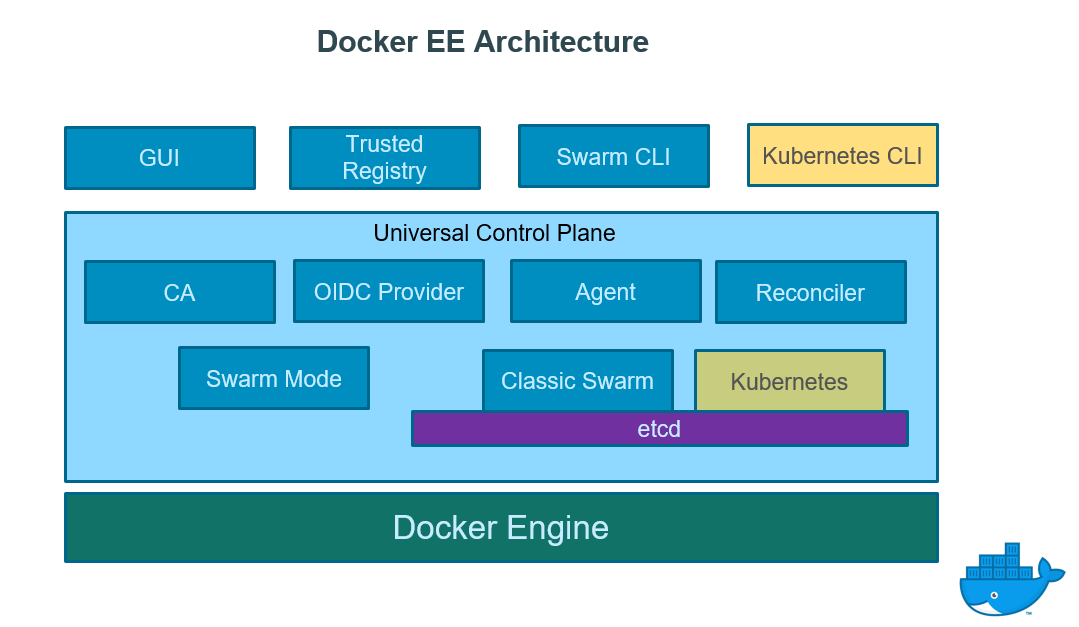
You can create a bridge network with below command, $ docker network create -driver bridge my_netĪ container can be attached to newly created network. On a user defined bridge network, containers can resolve each other by name or alias(DNS). User defined bridge networks are superior to the default bridge network. You can also create user defined custom bridge network. On the default bridge network, containers can only access each other by IP addresses, unless you use the link option, which is considered legacy. Port forwarding forwards outside traffic to the containers. Docker Networking: Bridgeīridge networking provides private internal IPs to all containers and they are isolated from host. When you start Docker, a default bridge network (also called bridge) is created automatically, and newly started containers connect to it unless otherwise specified.

Docker network ingress how to#
In this guide, you will learn how to configure Networking and Port Mapping in Docker. Docker containers also need to interact and collaborate with as remote ones to come out with distributed applications.
Docker network ingress install#
j REJECT -m comment -comment 'reject all other traffic to DOCKER-USER'ĭrawback still is that you need to install containerd.A Docker host comprises multiple Docker containers and hence the networking has become a crucial component for realizing composite containerized applications. p tcp -m multiport -dports 80,443 -s 1.2.3.4/32 -j ACCEPT -m comment -comment 'Allow IP 1.2.3.4 to docker ports 80 and 443'

j RETURN -s 172.17.0.0/16 -m comment -comment 'allow internal docker communication' m conntrack -ctstate RELATED,ESTABLISHED -j ACCEPT -m comment -comment 'Allow docker containers to connect to the outside world'

This ends in rules defined in /etc/firewalld/direct.xml: comment 'reject all other traffic to DOCKER-USER' This rule has lowest precedence, so you can add allowed IP rules later. comment 'Allow IP 1.2.3.4 to docker ports 80 and 443' Add rules for IPs allowed to access the Docker exposed ports. # Change the Docker Subnet to your actual one (e.g. comment 'allow internal docker communication' comment 'Allow docker containers to connect to the outside world' m conntrack -ctstate RELATED,ESTABLISHED \ To be able to set fine-grained rules for Docker, I did not need to set docker0 to any zone. # sudo firewall-cmd -zone=public -add-port=443/tcpĭocker run busybox ping -c 1 yourhost.local # Optional open required incomming ports (wasn't required in my tests) Sudo firewall-cmd -zone=public -add-masquerade -permanent # Masquerading allows for docker ingress and egress (this is the juicy bit) Sudo nmcli connection modify docker0 connection.zone public Changes will be visible only after firewalld reload # So add the 'docker0' interface to the 'public' zone.

Sudo firewall-cmd -get-zone-of-interface=docker0 # Check what zone the docker interface it bound to, most likely 'no zone' yet # Check what interface docker is using, e.g. Also remember to reload the docker daemon when done. Because by default it's not assigned to a zone. public (or add it to the "trusted" zone which was suggested here but I doubt that's wise, from a security perspective). What's missing from the answers before is the fact that you first need to add your docker interface to the zone you configure, e.g. Reboot or restart dockerd, and both ingress and egress should work. # Reload firewall to apply permanent rules # Specifically allow incoming traffic on port 80/443 (nothing new here)įirewall-cmd -zone=public -add-port=80/tcpįirewall-cmd -zone=public -add-port=443/tcp It looked like dockerd already did this through iptables, but apparently this needs to be specifically enabled for the firewall zone for iptables masquerading to work: # Masquerading allows for docker ingress and egress (this is the juicy bit)įirewall-cmd -zone=public -add-masquerade -permanent Long story short - for this to work, I had to enable masquerading. I was used to be able to find the whole truth in iptables, so this will take some getting used to. That means most - if not all - of the firewalld configuration will be applied outside the scope of iptables. While inspecting network rules with iptables, I realized that the switch to nftables means that iptables is now an abstraction layer that only shows a small part of the nftables rules. After spending a couple of days looking at logs and configurations for the involved components, I was about to throw in the towel and revert back to Fedora 30, where this seems to work straight out of the box.įocusing on firewalling, I realized that disabling firewalld seemed to do the trick, but I would prefer not to do that.


 0 kommentar(er)
0 kommentar(er)
